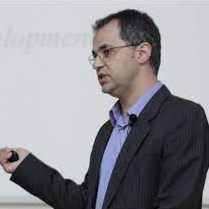Privileged Heterocyclic Scaffolds in Anticancer Drug Development
A special issue of Molecules (ISSN 1420-3049). This special issue belongs to the section "Medicinal Chemistry".
Deadline for manuscript submissions: closed (31 May 2022) | Viewed by 4535
Special Issue Editor
Interests: the design and synthesis of new anticancer agents; the design and synthesis of new antimicrobial compounds; studies and structural analysis; the isolation and analysis of natural compounds with anticancer effects; computer-assisted drug design studies
Special Issues, Collections and Topics in MDPI journals
Special Issue Information
Dear colleagues,
Several heterocyclic scaffolds, such as quinoline, benzimidazole, pyrazole, or indole, are considered privileged structures in the design of anticancer drugs. Due to their drug-like properties, these scaffolds are widely used in rational drug design and they can be found within a large variety of approved anticancer drugs. Of most interest are the scaffolds that have selectivity for a small group of closely related targets. This type of scaffold can generate compounds with high selectivity towards targets involved in cancer pathology, highlighting their importance in the development of selective antitumor drugs. The target-family privileged scaffold concept emerged to describe chemical frameworks that are specific for a single target family and with limited off-target affinities.
This Special Issue aims to provide a survey of the recent advances in the use of privileged heterocyclic scaffolds for targeted anticancer drug development. Special emphasis should be placed on the selective affinity of the heterocyclic scaffold towards a particular type of oncotarget. Either original research articles or reviews that discuss the anticancer applications of selective molecular scaffolds are welcome.
Dr. George Mihai Nitulescu
Guest Editor
Manuscript Submission Information
Manuscripts should be submitted online at www.mdpi.com by registering and logging in to this website. Once you are registered, click here to go to the submission form. Manuscripts can be submitted until the deadline. All submissions that pass pre-check are peer-reviewed. Accepted papers will be published continuously in the journal (as soon as accepted) and will be listed together on the special issue website. Research articles, review articles as well as short communications are invited. For planned papers, a title and short abstract (about 100 words) can be sent to the Editorial Office for announcement on this website.
Submitted manuscripts should not have been published previously, nor be under consideration for publication elsewhere (except conference proceedings papers). All manuscripts are thoroughly refereed through a single-blind peer-review process. A guide for authors and other relevant information for submission of manuscripts is available on the Instructions for Authors page. Molecules is an international peer-reviewed open access semimonthly journal published by MDPI.
Please visit the Instructions for Authors page before submitting a manuscript. The Article Processing Charge (APC) for publication in this open access journal is 2700 CHF (Swiss Francs). Submitted papers should be well formatted and use good English. Authors may use MDPI's English editing service prior to publication or during author revisions.
Keywords
- Privileged scaffolds
- Targeted drug design
- Anticancer drugs
- Medicinally privileged heterocycles






